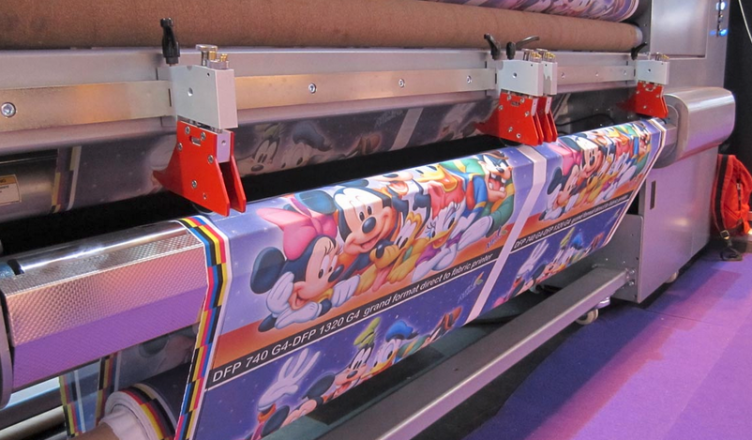Digital print fabric is when digital textile printing with specialized large-format inkjet is printed on fabric. When done right, it is generally eco-friendly and doesn’t add much to the carbon footprint. The business is growing in popularity especially for commercial purposes in advertisement in marketing. For example, some businesses want to sell their own t-shirts or use their own retail graphics. However, print fabric can also be used for more domestic purposes such as school functions and making your own shirts as a birthday or Christmas gift.
How It Works
The most popular fabric for print fabric is polyester. The one major exception to this is flags, in which case, nylon is usually used. This is due to the fact that the two above fabrics absorb the ink the most vividly. The inks used in the dye can range from anything from the disperse direct (also known as high energy sublimation) to acid. The print is fixated onto the fabric by a combination of infra-red with steam or heat-press.
Yes, Print Fabric Can Be Done at Home!
With the proper tools, you can print your own digital fabric. In the end, this may be less costly than ordering your fabric commercially. What you need is a cutting mat, 100 percent cotton white fabric, metal ruler, rotary blade, somewhere you can launder the fabric and of course, an ink jet. If your print fabric is an at-home business, you will also need packing labels ranging between eight-and-a-half to 11 inches. It is also recommended that you invest in a printer that uses pigment ink as it does not wear off from the fabric over time the way that dye inks do. The most affordable printer currently on the market is the Epson WF-7010 at less than $400, which is capable of printing up to 19-inch pages and uses DuraBrite Ink.
You can also use laser printers. One advantage to using a laser printer is that it is not necessary to pre-treat the fabric. All you need to do is bond the fabric to the freezer paper before running it through the printer. After it prints, you will need to let it dry outside or in a very well-ventilated room. Finally, you will need to add a fixitaf.
Conclusion
Printing digital fabric is a great hobby to have or gift to give. It can be done commercially or at home. Just ensure that the right tools are used and you’re good to go.

